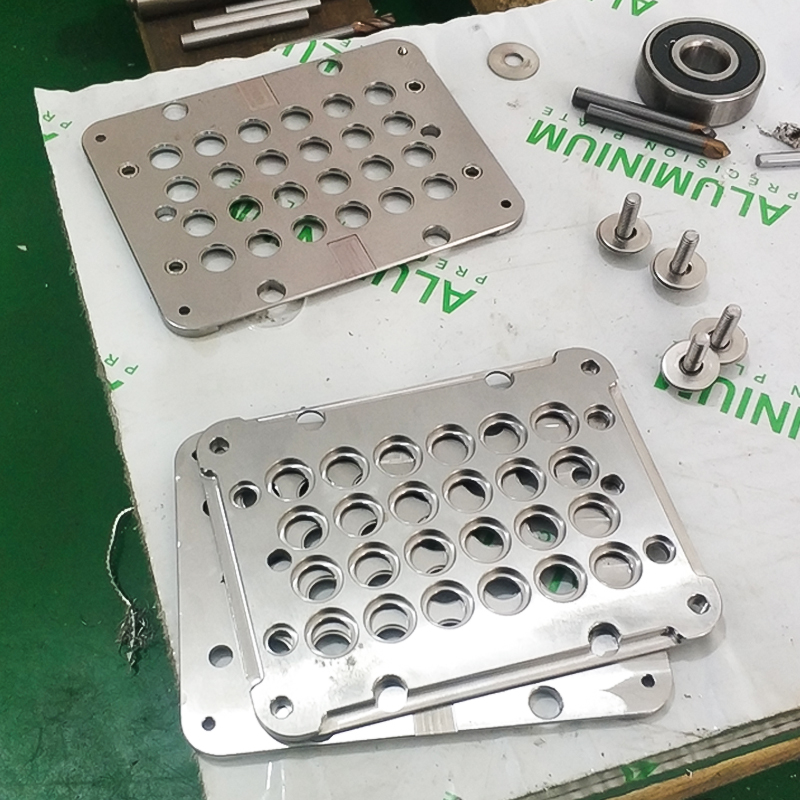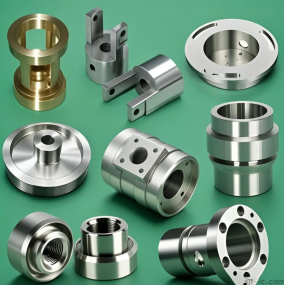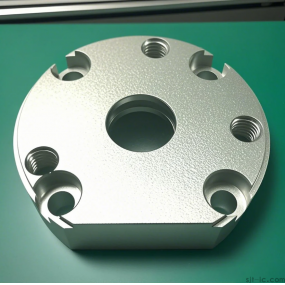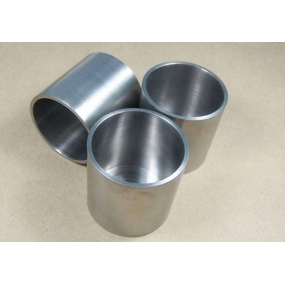Non standard parts processing refers to the process of processing based on customer provided non standardized product requirements and engineering drawings. Due to the differences in shape, size, etc. between non-standard parts and conventional parts, special processing methods are usually required during the manufacturing process. The following will introduce common process methods in the processing of non-standard parts.
1. Numerical Control Machining
Numerical control machining is a method of machining parts using numerical control machine tools. It inputs information such as machining paths and cutting parameters into the control system of the CNC machine tool according to the requirements of the engineering drawings, and automatically controls the cutting tools through the CNC system to achieve high-precision part machining. Numerical control machining is suitable for processing various materials and has the advantages of high machining accuracy and efficiency.
2. Milling processing
Milling is a method of cutting a workpiece using a milling cutter on a milling machine. Milling can be used to machine complex shaped parts such as planes, grooves, and cams. According to the shape and requirements of the parts, different milling methods such as flat milling, vertical milling, and extrusion cutting can be selected.
3. Turning machining
Turning is a method of rotating and cutting a workpiece using a turning tool on a lathe. Turning machining can be used to process shaft parts, disc parts, etc. According to the shape and requirements of the parts, different turning methods such as external turning, internal turning, chamfering turning, etc. can be selected.
4. Drilling and machining
Drilling is a method of drilling a workpiece using a drill bit on a drilling machine. Drilling can be used for machining hole type parts, such as hole machining, boring, etc. According to the requirements of the parts, different drilling methods such as single hole drilling, multi hole drilling, and boring plug can be selected.
5. Cutting and processing
Cutting is a method of cutting and processing workpieces using equipment such as shearing machines and laser cutting machines. Cutting processing can be used to process flat parts, such as cutting flat plates, cutting sheets, etc. According to the requirements of the parts, different cutting methods such as shearing, cutting, and laser cutting can be selected.
6. Welding processing
Welding is a method of welding and processing workpieces using welding equipment. Welding processing can be used to connect multiple parts and achieve complex shaped part processing. According to the requirements of the parts, different welding methods such as arc welding, argon arc welding, and laser welding can be selected.
7. Laser marking

Laser marking is a method of marking workpieces using a laser marking machine. Laser marking processing can be used for marking, engraving, etc. on parts. According to the requirements of the parts, different marking methods such as laser engraving and laser marking can be selected.
8. Grinding processing
Grinding is a method of grinding workpieces using a grinder. Grinding processing can be used to process precision parts, such as precision shaft parts, molds, etc. According to the requirements of the parts, different grinding methods such as outer circle grinding, inner circle grinding, and flat grinding can be selected.
9. Casting and processing
Casting is the process of melting metal, pouring it into a mold, and cooling it to solidify and form. Casting processing can be used to process complex shaped parts, such as casting molds, cast iron parts, etc. According to the requirements of the parts, different casting methods such as sand casting and metal mold casting can be selected.
The above are common process methods in non-standard part processing. According to different part shapes, sizes, and processing requirements, suitable process methods can be selected for processing to achieve precise machining and manufacturing of non-standard parts.


 Spanish
Spanish Arabic
Arabic French
French Portuguese
Portuguese Belarusian
Belarusian Japanese
Japanese Russian
Russian Malay
Malay Icelandic
Icelandic Bulgarian
Bulgarian Azerbaijani
Azerbaijani Estonian
Estonian Irish
Irish Polish
Polish Persian
Persian Boolean
Boolean Danish
Danish German
German Filipino
Filipino Finnish
Finnish Korean
Korean Dutch
Dutch Galician
Galician Catalan
Catalan Czech
Czech Croatian
Croatian Latin
Latin Latvian
Latvian Romanian
Romanian Maltese
Maltese Macedonian
Macedonian Norwegian
Norwegian Swedish
Swedish Serbian
Serbian Slovak
Slovak Slovenian
Slovenian Swahili
Swahili Thai
Thai Turkish
Turkish Welsh
Welsh Urdu
Urdu Ukrainian
Ukrainian Greek
Greek Hungarian
Hungarian Italian
Italian Yiddish
Yiddish Indonesian
Indonesian Vietnamese
Vietnamese Haitian Creole
Haitian Creole Spanish Basque
Spanish Basque









